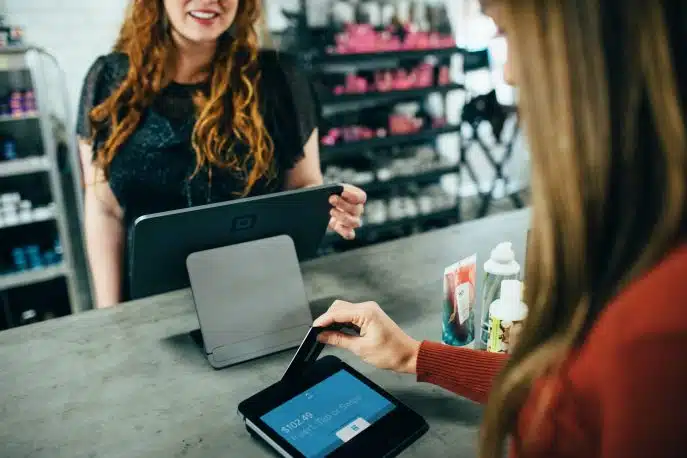Benefits of Unsecured Business Loans: 6 Reasons to Go with an Unsecured Business Line of Credit
If you’re in need of some quick cash-flow, there are a few options at your disposal. Find out why an unsecured line of credit is among the most promising.
Whether you’re starting a new business or growing an existing one, you need to have a stable positive cash flow. It’s the lifeblood of your business that allows you to finance everyday operations and growth-oriented projects. An unsecured business line of credit is a valuable tool for managing business finances, providing flexible funding to help you seize opportunities and handle financial challenges.
An unsecured business line of credit is just one of several business financing options available to entrepreneurs, offering a quick and flexible solution for urgent funding needs.
It’s also true that any business can experience a cash crunch at some point. It could come in the form of an emergency repair or an unexpected shortfall in available cash. In these situations, an unsecured business line of credit can serve as a financial cushion, helping you manage cash flow fluctuations and cover unexpected expenses.
When and if this should happen, an unsecured business line of credit can get you unstuck at a reasonable cost. A business line of credit works as a flexible, revolving source of funds, allowing you to borrow as needed and repay as your cash flow improves. Let’s take a closer look at how it works
What Is an Unsecured Line of Credit?
Simply put, an unsecured LOC is a form of lending that doesn’t require you to put up anything as collateral, therefore unsecured. This is a type of unsecured business lending, which differs from secured lending because it does not require assets like property as collateral and often relies on the business’s financial health and creditworthiness. The main difference between unsecured and secured loans is that secured loans require an asset or security, such as property or equipment, to back the loan, while unsecured lending does not. In unsecured lending, lenders evaluate the borrower’s creditworthiness and other factors, such as cash flow, instead of relying on collateral or security. You may also know that a credit card account is also unsecured.
Unlike a loan, you don’t get the funds in a lump sum. You tap into the line of credit when you need the money up to a limit. After paying some or all of what you owe, you can reuse the funds. Basically, you draw whatever amount of money you need and pay it back whenever a partial payment is due (usually accrued interest). In the meantime, you can keep drawing more money up to the limit as long as you keep your account in good standing. When comparing unsecured and secured loans, the key differences include the lack of collateral requirements—no asset or security is needed for unsecured lending—and the greater flexibility in accessing funds. Unsecured lending relies on other factors, such as the borrower’s creditworthiness and cash flow, while secured loans are backed by assets or security.
You might’ve heard it called by the other name of ‘revolving credit’. Because of its convenience, this is one of the first choices for businesses that need ongoing external financing. Unlike a traditional term loan, which has a fixed period for repayment, a line of credit offers flexible repayment options without a set end date. There are good reasons for that:
Understanding Your Business Loan Options
When it comes to funding your business, understanding your business loan options is key to making the right financial decisions. Unsecured business loans are a popular solution for businesses that need quick access to funds without putting valuable assets on the line. Unlike secured loans, unsecured loans don’t require collateral, making them ideal for businesses that want to preserve their assets while still managing cash flow fluctuations or covering operational expenses. When determining if an unsecured business loan is the right fit, it’s essential to consider the loan amount as a critical factor, as it impacts your repayment capacity, loan terms, and overall financial planning.
Unsecured business loans can be used for a variety of business purposes, from bridging short-term cash flow gaps to funding new projects or expansion that support business growth. However, it’s important to weigh the pros and cons. While these loans offer fast access to funds and flexibility, they often come with higher interest rates and more stringent eligibility criteria compared to secured loans. By carefully considering your business’s needs and financial situation, you can determine if an unsecured business loan is the right fit to help your business grow and thrive.
Eligibility and How to Apply
Qualifying for an unsecured business loan typically requires your business to demonstrate a strong credit history, stable finances, and a clear business plan. Lenders will often ask for supporting documents such as recent bank statements, details about your business’s financial health, and financial information such as profit and loss statements, transaction lists, and balance sheets to assess your business’s financial health. This helps them determine your eligibility and the amount you can borrow.
The application process is straightforward and can often be completed online, making it easy to apply from anywhere. Many online lenders offer a streamlined approval process, allowing you to access funds quickly when you need them most. In some cases, lenders may require a personal guarantee from up to five directors, which means you and other key stakeholders may be personally responsible for repaying the loan if the business cannot. By preparing your financial documents and understanding the requirements, you can improve your chances of approval and secure the funding your business needs.
Financing and Lenders: Who Offers Unsecured Business Lines of Credit?
Unsecured business loans have become a go-to financial solution for many businesses looking to expand operations, manage cash flow, or cover unexpected expenses—without putting their valuable assets on the line. When it comes to unsecured business lending, a wide range of lenders now offer unsecured business lines of credit, making it easier than ever for business owners to access the funds they need.
Banks, alternative lenders, and online lenders all provide unsecured business loans, each with their own lending criteria, interest rates, and repayment terms. Traditional banks may have stricter eligibility criteria, often requiring a strong credit rating and a solid financial history. In contrast, alternative lenders and online lenders tend to offer more flexible options, sometimes considering businesses with bad credit or those that don’t meet the minimum requirements of major banks. Some lenders may also require a personal guarantee from the business owner or up to five directors, while others may not, so it’s important to review these details before applying.
One of the main advantages of unsecured business loans is the streamlined application process. Many lenders allow you to apply online, making it convenient for busy business owners to submit their application from anywhere. The approval process is often quick, with some lenders providing conditional approval on the same business day and unconditional approval within just a few business days. Loan amounts can vary widely, with many lenders offering unsecured business loans ranging from $10,000 up to $500,000, depending on your business’s financial history and needs.
When comparing lenders, it’s essential to look at several factors, including interest rates, fees, repayment terms, and eligibility criteria. Some lenders offer variable rates, while others provide fixed rates, so understanding the loan terms is crucial. Repayment schedules can also differ, with options for monthly repayments or weekly repayments to help you manage your cash flow more effectively. Be sure to consider any additional costs or fees that may apply, and always read the fine print before accepting a loan offer.
Unsecured business loans are available to a wide range of businesses, from sole traders and small businesses to established businesses looking to expand. With quick access to funds, flexible repayment options, and no need for physical assets as collateral, unsecured business lines of credit can be an excellent financing option for many businesses. By researching and comparing multiple lenders, you can find the best financial solution to support your business goals and keep your operations running smoothly. Learn more about why business loans are important.
1. You Don’t Need a Perfect Track Record
Major banks have high standards for loan applications. They scrutinise every detail of your business to make sure you’ll be able to pay back the loan. Without collateral, it can be quite hard to get a regular bank loan. Traditional banks often assess business performance, financial history, and the business’s cash flow when evaluating loan applications.
3rd party lenders, on the other hand, are much less demanding. Many of them will listen to you and consider your situations even if your credit history isn’t ideal. Different lenders, including credit unions, may have varying requirements and approval processes. Of course, those with a good credit history will be able to negotiate a better deal. The interest rate has an inverse relation to the risk that a lender has to assume.
To get the best possible deal, it’s a good idea to seek help from a business advisor. They can help you build a credit profile with an eye towards more favourable loan terms. Business financials play a key role in this process, as lenders often require accounting data to verify your financial position, and a credit check is typically performed as part of the application process. Moreover, they can make sure that the application process is fast and smooth.
For example, a two-year-old business managed to get $70,000 in just 10 days after applying. After the advisor helped them clean up their credit profile, they managed to get a no-doc unsecured line of credit with ease.
2. It’s Easily Accessible
The attraction of an unsecured business is that you can have the money whenever you need it. Moreover, most lenders have digitised fund management and transfers for easy access. You can also apply online for an unsecured business line of credit, making the process quick and convenient.
With a line of credit, you can avoid cash flow mishaps and bottlenecks. In addition, you can react quickly to both unexpected setbacks and profitable opportunities. Once approved, funds can often be accessed within a business day.
3. You Can Repay Whenever You Want
When you take out a term loan, there’s always a fixed repayment schedule. If you miss the deadline, you’ll have to pay late fees or penalties. Some lenders allow you to pay off the loan early, but others may charge a penalty for early repayment, so it’s important to check the terms. Additionally, some lenders offer weekly repayments, which can help you manage your cash flow more effectively.
Some lenders also offer a variable rate on lines of credit, providing additional flexibility in repayment terms.
This isn’t the case with an unsecured line of credit. You can pay down the credit line so that you can access more money whenever you want. What’s more, you can repay it in full without any additional fees, giving you the option to pay off your loan early without penalties. And if you can’t repay in full, you don’t have to. As long as you pay the interest rate and fees as agreed, you get all the flexibility with your outstanding balance.
4. You Only Pay for What You Use
A term loan comes with an interest rate on the full amount of the loan. If you end up not using all the money borrowed, you still pay on everything.
With an unsecured business line of credit, you only pay interest on the funds that you access. This approach allows businesses to borrow money as needed, avoiding unnecessary costs on unused funds. In the long run, this can prove to be a much more cost-effective financing option.
It means that you have full control over the money that you borrow. If you’ve overestimated the amount that you need, you won’t face additional fees for borrowing money that you don’t use.
5. Your Credit Line Grows with Your Business
Many business owners decide to go with an unsecured line of credit for the long term. It’s always a good idea to have some spare cash for when you need it. And since you don’t have to pay for it if you don’t use it, there’s really nothing to lose here.
A business’s financial health and track record can influence the growth of its credit line and eligibility for higher limits. Established businesses with strong financials may qualify for better terms and higher credit limits. Many small businesses have been funded through unsecured business lines of credit, which are specifically tailored for small business owners and differ from small business loans by offering flexible access to capital without the need for collateral.
Unsecured business lines of credit are designed to meet the unique needs of small businesses, providing quick and unsecured funding solutions suited to their operational requirements. Unlike secured business loans or secured loans, which require assets or provide collateral to secure the financing, unsecured loans do not require collateral, making them accessible to businesses without significant assets. However, lenders may require personal guarantees, putting personal assets at risk if the loan is not repaid.
Unsecured loans are considered higher risk for lenders, which often results in a higher interest rate compared to secured loans that may offer lower interest rates or a lower interest rate due to the reduced risk. Secured and unsecured loans differ in their approval processes, risk levels, and interest rates, with secured loans typically offering more favorable terms for those able to provide collateral.
Additionally, a business line of credit offers more flexibility than term loans, which have fixed repayment schedules and are better suited for large, one-time expenses. A line of credit can be used to cover operational expenses, especially during periods of growth or cash flow fluctuations.
Better yet, your borrowing power grows with your business. This is very helpful because you’ll likely face more demanding challenges as you grow your business. In addition, you can always work to improve your standing and negotiate a better deal with the lender.
How to Access Your Funds
After your unsecured business loan is approved, accessing your funds is typically fast and hassle-free—often within just a few business days. These funds can be used to cover unexpected expenses, manage cash flow fluctuations, or invest in opportunities to grow your business. Many lenders offer flexible financing options, such as a revolving line of credit, which allows you to draw and repay funds as your business needs change.
You’ll also have the flexibility to choose repayment options that suit your business’s financial situation, whether that’s weekly or monthly repayments. It’s important to review your loan’s terms and conditions, including the interest rate and repayment period, so you can make informed decisions and maximize the benefits of your unsecured business loan. With the right approach, you can use these funds to strengthen your business’s financial position and support ongoing success.
The Bottom Line
You can now see why many business owners decide to go with an unsecured business line of credit. It’s an easily accessible option that can help you finance your business without severely affecting your cash flow.
Key Takeaways
- Unsecured business lines of credit offer flexible access to funds without requiring collateral.
- You only pay interest on the amount you use, making it a cost-effective solution if managed well.
- This financing option can help maintain your cash flow and support business growth.
- Consider the higher interest rates and ensure you understand the terms before applying.
Better yet, it’s among the most cost-effective financing options if properly managed. Although the interest rate is higher, you don’t have to pay interest until you use the funds. And then only on the amount that you owe. As a result, you can direct more money towards growing your business.
Of course, there are still a few additional things that you should know about an unsecured LOC before you make your final decision. And we can help you with this. For more details about this financing option, go ahead and visit our website




